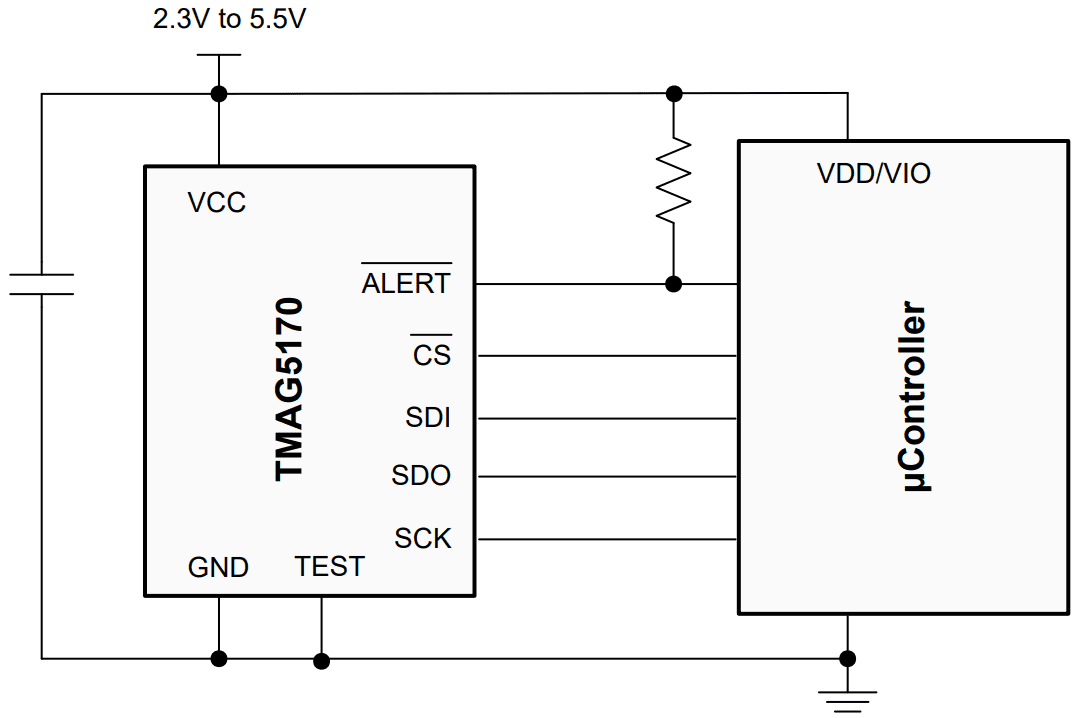 Certification of PCB design verification
Certification of PCB design verification
Accurate position, speed, and orientation sensing are needed in many electromechanical applications, but small sensor solutions with multiple degrees of freedom have historically been difficult to design. For example, in the past, a design would need three copies of a 1D linear sensor, all oriented orthogonally, to provide 3D measurements, which is easier said than done when working on a PCB. However, today, more compact sensor solutions are enabling accurate position measurements along multiple degrees of freedom.
Hall-effect sensors have been some of the most adaptable types of sensors for position, orientation, proximity, and of course, magnetic field measurements. Texas Instruments has developed the TMAG5170, the industry’s most accurate 3D Hall-effect position sensor, to provide real-time position measurement capabilities at 20 kSPS. With this component, designers can implement highly accurate Hall-effect sensor measurements in multiple degrees of freedom.
About the TMAG5170 Hall-effect Sensor
The TMAG5170 is a 3-axis Hall-effect sensor with an integrated analog front-end and digital interface for accessing data. The TMAG5170 is designed for real-time measurement and data conversion for precision electromechanical and safety-critical applications. The integrated analog and digital sections in this component provide more accurate real-time control with 3 degrees of freedom in a smaller package compared to discrete solutions.
The TMAG5170 operates with a moderate-speed SPI bus to provide a host controller with real-time data conversion and output. The component includes an integrated angle calculation engine (CORDIC) that can provide accurate measurements over a 360° range with on-axis or off-axis angle measurement. The angular position is calculated using absolute position measurements along two magnetic axes selected by the user. These settings and other device settings are relatively simple to configure and integrate into a system’s application.
The table below summarizes the basic features of the TMAG5170 and its operating parameters.
| Input supply voltage range | 2.3 to 5.5-V DC |
| Selected magnetic field measurement range | – TMAG5170A1: ±25, ±50, ±100 mT
– TMAG5170A2: ±75, ±150, ±300 mT |
| Measurement error | – <2.6% full-scale total error at room temperature
– 3% total error across temperature |
| Operating speed | 20-kSPS conversion rate, 10-MHz SPI clock speed |
| Current consumption | 1.5- μA average current at 1 Hz
3.4-mA active current |
| Operating temperature range | -40 to +150 °C |
| Package | VSSOP-8 |
The low operating and deep sleep current make this component one of the lowest power Hall-effect sensors. The component contains additional built-in functions that help ensure accuracy, safety, and real-time data processing:
- Built-in temperature sensor with < ±2°C error for temperature compensation
- Integrated fault detection diagnostics
- Autonomous wake-up and sleep modes
- Automatic gain and offset adjustments applied in angular position calculations
- Averaging can be configured internally
The features and specifications in this highly integrated component eliminate the need for external temperature compensation and calibration. Additionally, the TMAG5170’s features make it ideal for a broad range of electromechanical applications where highly accurate sensor measurements are needed for real-time control and feedback. Examples include consumer or industrial robotics, motor position sensing and control, actuators, and angular proximity measurements.
Using the TMAG5170
The TMAG5170 sensor is extremely easy to use: it simply wires up to a host controller (MCU, FPGA, etc.) over an SPI interface. A driver needs to be included in the host firmware so that the sensor can be configured and to trigger the device to output its register data and start a new conversion. Additional configuration settings can be found in the TMAG5170 datasheet. There is also an open source example driver for the TMAG5170 available on GitHub. In general, the device application can configure the TMAG5170 to provide any combination of magnetic axes and temperature measurements.
The image below shows a basic application diagram for implementation over SPI. Note that the ALERT pin is active-low and is not part of the SPI bus. It is used to trigger the TMAG5170 so that the sensor begins a new conversion and can be used as a system interrupt during wake-up and sleep mode. The CS pin also allows the sensor to be used alongside any other devices on a standard SPI bus.

TMAG5170 application circuit.
On the PCB, it’s recommended that the TEST and GND pins be bridged with a single polygon to ensure the lowest possible inductance between these pins. VCC and GND should also be bridged with a decoupling capacitor very near the pins to provide a low loop inductance connection that ensures power stability. A ceramic capacitor of at least 10 nF is recommended by TI.
Alternative Components
If your host controller does not include an SPI interface, TI offers an alternative 3D Hall-effect sensor in a smaller, 6-pin SOT-23 package. The TMAG5273 provides similar 3D measurement capabilities as the TMAG5170 but with an I2C interface instead of SPI. This alternative component uses a dedicated interrupt (INT) pin that acts like a system interrupt, allowing the system controller to trigger a new sensor conversion (plays a very similar role as the ALERT pin in the TMAG5170).
In addition to the TMAG5170 and TMAG5273, TI offers an automotive-qualified version of the TMAG5170 under part number TMAG5170-Q1. This component offers the same functionality in the same VSSOP-8 package, but it has been developed per AEC-Q100 qualification and received the ISO26262 ASIL-B certification for functional safety applications.
When you’re sourcing components and looking for additional parts to use with the TMAG5170, use the complete set of search features in Ultra Librarian. The Ultra Librarian platform gives all users access to sourcing data, PCB footprints, ECAD/MCAD models, and a library of reference designs to help users speed up development. All ECAD data you’ll find on Ultra Librarian is compatible with popular ECAD applications and is verified by component manufacturers to help streamline your operations.
Working with Ultra Librarian sets up your team for success to ensure streamlined and error-free design, production, and sourcing. Register today for free.








